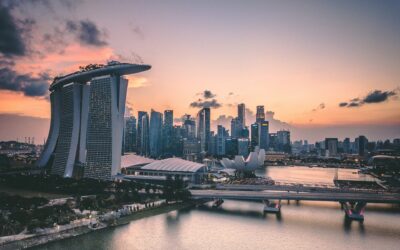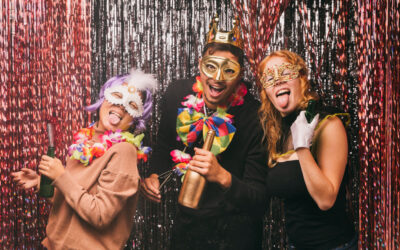When designing a website, there are many things to consider. Interactivity, layout, fonts, color, and responsiveness are just a few examples. While it’s true that these elements are all essential to web design, some are more important than others. Cyber security is the perfect example of this. Not only does it protect your users’ data, but it also makes your site more likely to rank higher.
Unfortunately, it can be difficult to maintain security during web development. If you’re having a hard time incorporating cyber security into your web design, the following tips should help.

1. Hire A Security Expert
Before you start working towards your goal, it’s important to remember that web design is a bit of an ordeal. It doesn’t come easy, and you’ll have to do maintenance every now and then.
Furthermore, depending on how you approach this, maintenance may become easier or harder in the long run. For that reason, it’s advisable to hire a security expert, ideally, one who dabbles with web design, right from the get-go. Doing so allows you to minimize the running cost of your website if you can properly utilize cyber security in your web design. Plus, they most likely know the following tips and more. Lastly, you can always ask them for help with matters outside of web design.
That’s especially true when it comes to consulting agencies. Speaking of which, if you’re situated in New York, you might want to look into IT consulting New York City.
2. Make Sure You Are Compliant to The State Policies
If you’ve been keeping up with the news, you’ve probably heard how numerous countries enforced information security standards for organizations and individuals operating online. These standards include many policies and requirements that can go a long way in maintaining the security of your web design. Examples of security policies in various countries include:
- Data breach response
- Data backup
- User identification, authorization, and authentication
- Disaster recovery
- Monitoring and logging
- Personnel security
If you can comply with the policies instituted in your country or state, you should be able to get closer to incorporating cyber security into your web design.
3. Establish Strict Password Policies
When creating an account for any sort of platform, you’ll sometimes encounter cases where you are required to follow specific rules or policies when creating the password.
For example, they may require you to do the following:
- Include at least eight characters
- Add both lowercase and uppercase letters
- Combine letters and numbers
- Put special characters (e.g., @, !, #, ?) into the mix
Requiring visitors to follow these rules is an excellent way to incorporate cyber security into your web design, as it prevents hackers from brute-forcing their way into the users’ accounts.
Apart from upholding these rules, you can also include a few pointers on how to create a strong password, such as how they should refrain from using personal info to create a password. You may also enforce a policy where users must change passwords regularly to prevent hackers from having any chance of hacking into a user’s account. All of these can help with cyber security.
4. Enforce Multi-Factor Authentication for The Login Procedure
Another common strategy to ensure maximum website security is multi-factor authentication.
Multi-factor authentication, also known as MFA, is the practice of requiring more than one authentication factor from a user. So, instead of only asking for a password to login into their account, the user will have to enter other factors, such as:
- A passphrase
- Identification number
- One-time password (OTP)
- Biometric data (e.g., fingerprint, face, voice, etc.)
- Token
The main reason for this is that by requiring multiple factors, hackers can no longer get their way into a user’s account by simply guessing the password. Instead, they will have to crack even more authentication factors, lowering the overall risk of cyber-attacks on the website and its users.
5. Make Use of SSL Encryption
You’ve probably seen the abbreviations SSL countless times while browsing the internet. For your reference, SSL stands for Secure Sockets Layer, and it’s a technology that has to do with security.
So, how does SSL encryption help with incorporating cyber security into your web design?
For starters, SSL works by ensuring that any data or information being transmitted from one place to another is unreadable. For example, if you purchase something from an eCommerce website, naturally, you’ll need to send them your banking information. While sending that data, there’s a chance that a hacker may intercept the transmission, which can be bad news.
SSL prevents hackers from reading any data they may get their hands on during the ordeal. This means your information is protected even in the worst-case scenario.
With that said, consider getting your website an SSL certificate as part of the web design process. You can do so by choosing a web hosting provider that has a built-in SSL encryption feature. It’s also possible to get SSL encryption by obtaining a certificate from a separate party.
6. Adjust Your Website’s CMS Settings
If you’re just like any other website owner, you’re probably using a website builder of some sort to manage your website. In that case, you should what’s a content management system or CMS. Basically, a CMS is an application used to manage the content of your website. It allows you or your contributors to create, modify, or publish different types of content.
So, what does this have to do with cyber security or web design?
To start with, if you’re using the default CMS settings, your website is more vulnerable than most, much like how it’s effortless to steal the Wi-Fi password of your neighbor if it’s still the default setting. Hence, you should adjust your website’s CMS settings as part of the web design process. This should go a long way in maximizing your site’s cyber security.
Conclusion
Maintaining a website’s cyber security can be pretty intimidating. After all, if you make a mistake, it’ll most likely bite you back in the future. A user may sue you for having their data leaked, or a hacker may get into your database. That’s why even in the web design process, you must start working on your cyber security, and this article would help in that regard.








Very interesting article, thanks for sharing. 2020 made significant adjustments to the work of most companies. The move online and the often forced digital transformation brought a wide range of new risks to the lives of executives that many were simply not ready for. The consequences of cyberattacks, technical malfunction of services, or human error can seriously damage a business. Roughly 80% of companies have experienced a cyberattack in the past 12 months, and data fraud and cyberattacks are the fourth and fifth global risks that every organization faces, according to the 2019 World Economic Forum’s Global Risk Research.